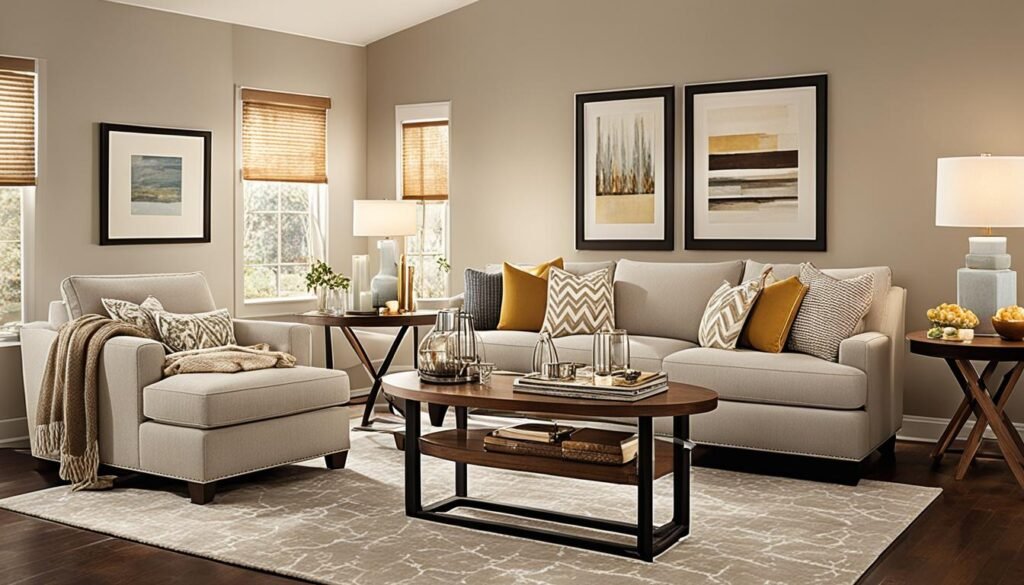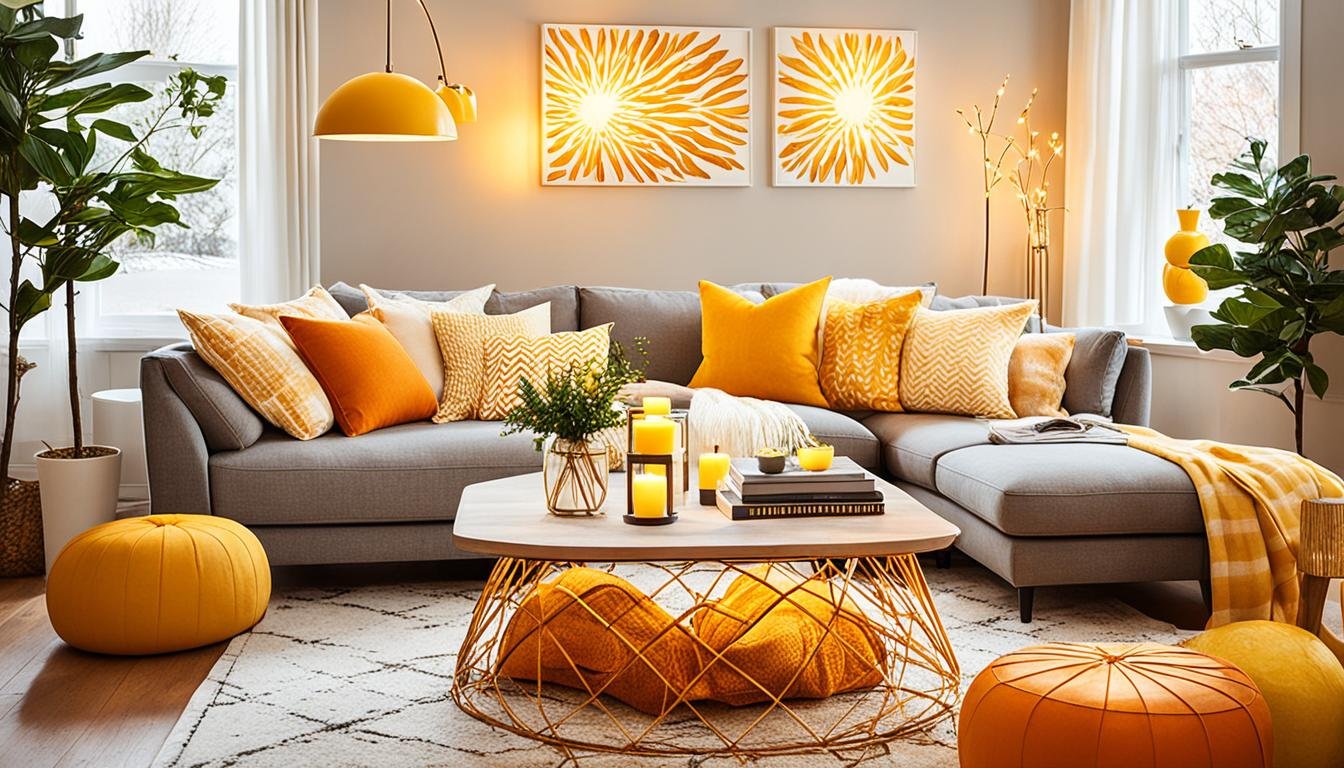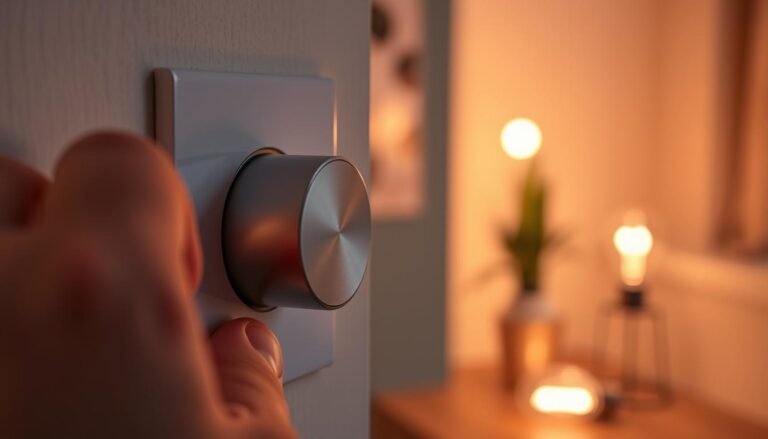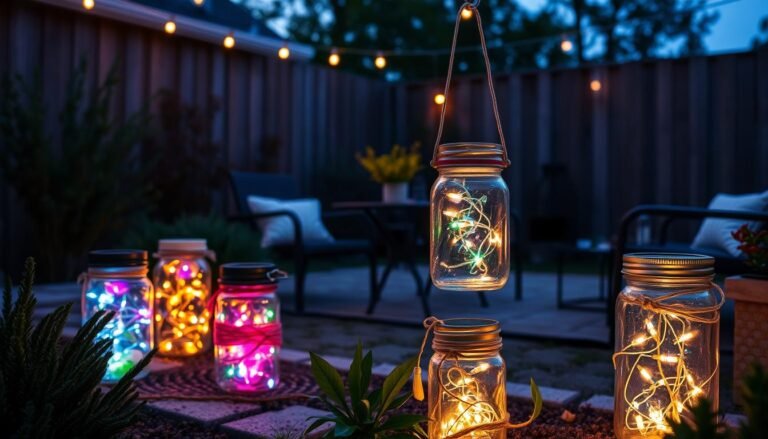Affiliate Disclosure: This post may contain affiliate links. If you make a purchase, we may earn a small commission at no extra cost to you.
Have you ever walked into a room and instantly felt a sense of warmth and relaxation?
Or perhaps you’ve been to a restaurant where the lighting created an intimate and romantic atmosphere.
What if you could recreate those magical moments in your own home?
Mood lighting is the secret ingredient to transforming your space and setting the perfect ambiance for any occasion.
In this article, we’ll explore the essentials of mood lighting and how you can use it to enhance your interior spaces. From understanding color temperatures to choosing the right lighting fixtures, we’ll show you how to create the perfect atmosphere in every room of your home.
Check out our FREE Calculators on our Resources Page
So, how can you harness the power of mood lighting to create an inviting and captivating space that reflects your unique style and personality? Let’s find out!
Choosing the Right Color Temperature for Mood Lighting
When it comes to creating the perfect ambiance with lighting, color temperature is a key factor to consider. Different color temperatures can evoke varying moods and emotions, allowing you to set the desired atmosphere in each room of your home.
One option to consider is warm light, which has a color temperature of less than 3,000K. Warm light creates a calming and soft environment, making it an excellent choice for bedrooms, living rooms, and dining rooms. It adds a cozy and intimate feel to these spaces, perfect for unwinding after a long day or enjoying a romantic dinner with loved ones.
Also Read – Illuminate Your Home with Display Lights
On the other hand, cool light, with a color temperature ranging from 3,000K to 4,500K, brings a more energized and vibrant atmosphere to your home. It is an ideal choice for high-traffic areas such as kitchens, where you want to create a lively and dynamic environment. Cool light can help keep you alert and focused while preparing meals or engaging in various activities.
For those looking to infuse their space with the brightest lighting, daylight is the way to go. With a color temperature of 4,500K, daylight creates a refreshing and invigorating ambiance. It is commonly used in craft rooms, workshops, and display rooms, where optimal brightness is required to perform tasks or showcase exhibits.
Whether you prefer warm light for a cozy evening or cool light for an energetic gathering, choosing the right color temperature ensures that your lighting aligns with your desired atmosphere.
Understanding the Types of Lighting Fixtures for Mood Lighting
To create the perfect mood lighting setting, it is essential to understand the three basic types of lighting fixtures: ambient lighting, task lighting, and accent lighting.
Ambient lighting, also known as general lighting, illuminates the entire space and sets the overall mood. It provides a soft and welcoming glow that creates a comfortable and relaxed atmosphere in your home. You can achieve ambient lighting through various sources, such as ceiling fixtures, chandeliers, or wall sconces.
Task lighting, on the other hand, is focused on a specific area and provides a secure environment for tasks. This type of lighting is often brighter and more concentrated to ensure optimal visibility for activities like reading, cooking, or working. Desk lamps, under-cabinet lights, or pendant lights over a kitchen island are examples of task lighting fixtures.
Accent lighting is used to highlight specific locations or objects, adding depth and visual interest to your space. It draws attention to architectural features, artwork, or decorative elements.
Spotlights, track lights, or picture lights are commonly used for accent lighting. By strategically placing accent lights, you can create a focal point and enhance the overall aesthetics of a room.
Now that you understand the types of lighting fixtures for mood lighting, let’s explore how to create the right lighting angle and choose the appropriate number of fixtures to enhance your lighting scheme.

Creating the Right Lighting Angle and Number of Fixtures
Lighting angle can significantly impact the atmosphere in a room, influencing how objects are illuminated and shadows are cast. While overhead lighting provides a sharp and clean aesthetic, it can also create harsh shadows and accentuate imperfections.
To counteract this, consider incorporating additional light sources such as wall lights or free-standing lamps to create a more balanced and flattering lighting scheme.
Combining different lighting angles can add depth and dimension to a space, enhancing the overall mood. For example, placing a floor lamp at a lower angle can create a warm and inviting glow, while highlighting specific features or decorative elements in the room.
On the other hand, wall sconces or upward-facing fixtures can bounce light off the ceiling, creating a soft and diffused ambiance.
Another crucial aspect to consider is the number of fixtures used in a room. The right balance is essential to achieve the desired lighting effect. In smaller rooms, using multiple lights close together can create a cozy and intimate atmosphere. Grouping fixtures together can also help distribute the light evenly and minimize shadows.
Conversely, in larger spaces, spreading out the fixtures ensures that the room is well-illuminated without overwhelming the area.
Experiment with different angles and configurations to find the perfect balance that suits your space and desired atmosphere.
Conclusion
Mood lighting is an essential element of interior design that can completely transform your home and create the perfect ambiance for any occasion. By taking into account factors such as color temperature, lighting fixtures, angles, and the number of fixtures, you can craft a personalized and atmospheric lighting scheme that enhances the mood in every room.
With the wide range of options available, such as smart lighting, color-changing lights, and LED mood lights, you have the flexibility to customize and adapt your lighting to suit different moods and preferences. Smart lighting systems allow you to control your lights remotely, change colors, and adjust brightness levels effortlessly, adding convenience and versatility to your lighting setup.
Color-changing lights and LED mood lights bring an extra layer of creativity and fun to your space. With just a few taps on an app or a voice command, you can set the tone for relaxation, entertainment, or even energizing activities. B
So, why settle for ordinary lighting when you can have extraordinary atmospheric lighting that sets the perfect mood? Try incorporating smart lighting, color-changing lights, or LED mood lights into your home today, and experience the transformative power of mood lighting.
FAQ
What is mood lighting?
How does color temperature affect mood lighting?
What are the different types of lighting fixtures for mood lighting?
How can lighting angles and the number of fixtures impact mood lighting?
Why is mood lighting important in interior design?
Check out our FREE Calculators on our Resources Page




